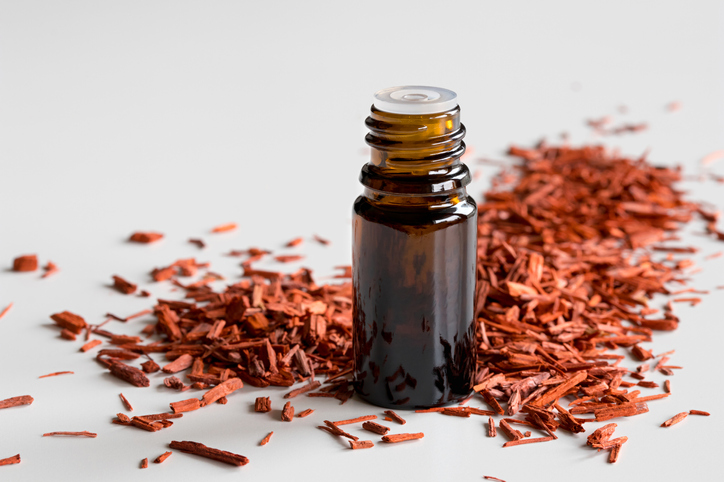India is synonymous with sandalwood which, has sadly contributed to its scarcity.
Instead, rising to the top of sandalwood sourcing is Western Australia. Traceable and sustainable practices are diligently adhered to leading to the region becoming the preferred place for perfume manufacturers to buy their ingredients.
esprit Magazine spoke with the leading ethical operator in WA, Enterprises Down Under. It’s a beautiful story of exquisite oils emerging from Ecologically Sustainable Forest Management methods including a special role for the Woylie marsupial.
Down Under Enterprises grows, produces and delivers traceable and sustainable botanicals to customers around the world. Since 2001, the company committed to delivering quality, native Australian essential oils from the farm to customers with an exceptional level of customer service.
Down Under’s Australian Sandalwood Oil is secured through a structured sustainability program created by the Western Australian government and implemented by the government’s Forest Products Commission (FPC).
Sandalwood is one of the most prized essential oils. Modern science has recognised Sandalwood for its antimicrobial, antiviral and anti-inflammatory properties.
Sydney-based perfumer expert/blogger Clayton Ilolahia says sandalwood oil has returned in popularity thanks to the sustainable plantations in Western Australia.
“By the end of the 20th century Indian sandalwood was critically scarce. Chemists supported the fragrance industry’s creation of a plethora of molecules like Javanol and Polysantol, which perfumers use to evoke the scent of sandalwood but nothing compares to the natural oil. It’s rich in aromatic alpha and beta santalol, which is distilled from the heartwood of Santalum album trees. The odour is warm and woody with a creaminess that is unique to sandalwood. It’s used as a base note so it can be hard to smell at first, but it lasts for hours, even days,” says Ilolhia.
However, the lure of adulteration to achieve excessive profits is simply too great for some. Due diligence is needed. Sustainability is paramount to the Forestry Products Commission (FPC), the Western Australian government agency tasked with managing this amazing natural resource. FPC applies the principles of Ecologically Sustainable Forest Management, working towards an Australian Forestry Standards across its Sandalwood operations.
Annually, Department of Biodiversity, Conservation and Attractions (DBCA) licensed contractors harvest approximately 500 tons of oil-yielding Sandalwood trees, 4,409 hectares spread across 146 million hectares; from government lands on a strict, multi-decade rotational schedule.
Annual harvested areas account for only 0.009% of the total allocated land area. This ratio allows for controlled harvesting followed by extensive and sustainable regeneration activities.
The FPC manages staff to conduct Sandalwood plantings and other regeneration activities, including Aboriginal staff to plant in environmentally and culturally sensitive areas ensuring the ISO14001-certified sustainability of this activity for many generations to follow. This independent certification provides assurance that Australian Sandalwood originates from responsibly managed forests, assuring the global market of a stable and sustainable supply of Australian Sandalwood Oil.
Geographic exclusion zones have been established to protect areas of high conservation and Aboriginal cultural value. Furthermore, silvicultural protocols ensure that mature seed-bearing trees remain in harvested areas. Improved seed availability, selection and artificial dispersion techniques, such as Operation Woylie, are yielding the expected Sandalwood regeneration gains.
Researchers from Murdoch University investigated and confirmed the role of Woylies, a marsupial also known as a desert rat kangaroo, in the critical dispersion and ‘caching’ of Sandalwood seeds.
In addition to Woylie conservation activities, the FPC designed mechanical equipment to mimic the Woylie’s seed dispersal and planting technique. These regeneration practices occur in harvested areas with 10,000,000 seeds planted across 1,500km of terrain every year. Studies have demonstrated approximately 100,000 of these seeds germinate as viable Sandalwood seedlings every year.

